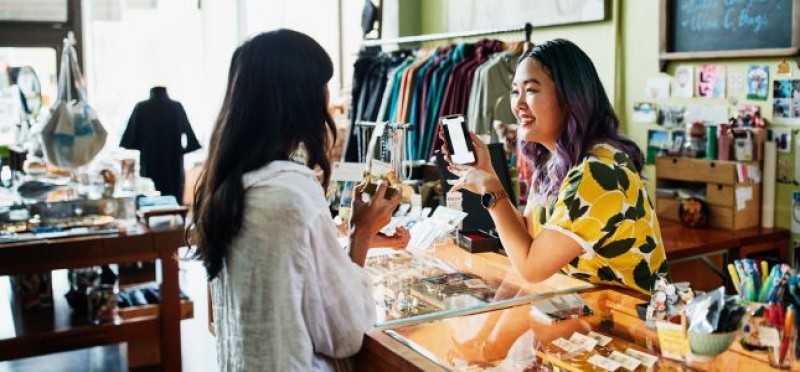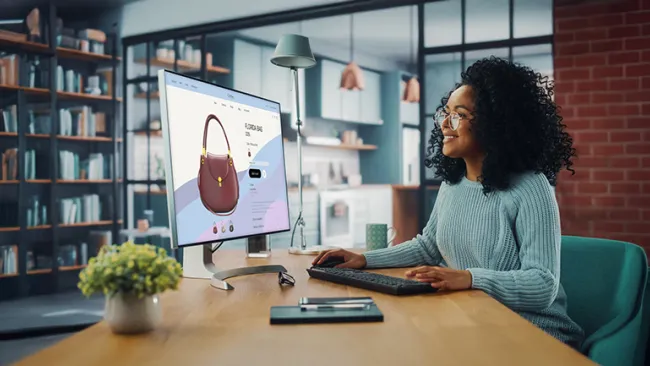Retail has been altered in ways large and small since the COVID-19 pandemic began 16 months ago. Businesses had to quickly adapt and find new ways to connect to their customers while maintaining operations. And it’s not over. At NRF Retail Converge, retailers weighed in on the consumer habits that they anticipate will outlast the pandemic, changing business models and the customer experience.
What customers want from the new physical store
The National Retail Federation announced in June that it expects retail sales to jump between 10.5% and 13.5% to more than $4.4 trillion this year compared with last year. “Americans are shopping—but HOW are they shopping?” asked Lee Petersen, EVP of thought leadership and marketing at WD Partners, a strategy and design firm.
Social distancing requirements, lockdowns, and store closures accelerated services that had been in the works prior to the pandemic—buy-online-pickup-in-store (BOPIS), dark stores, and delivery posts, to name a few—that customers now expect, he continued.
The pandemic “changed the way that consumers shop and retailers will have to adjust to these changes for good,” he said. In a survey of 2,500 consumers conducted by WD Partners, 84% indicated that they used BOPIS in the last 3 months and 86% said it was a “top digital physical tool.”
At the same time, a majority (48%) of consumers said that an excellent in-store experience was still very important. So, what do customers want from an in-store experience? According to several consumer focus groups, the following store concepts resonated the most:
Experience: A store where consumers can socialize as well as shop, think a store with a coffee bar and lounging area next to merchandise.
Dark stores or micro-fulfillment centers: Stores that only offer delivery and pickup services for online orders.
Hybrid: A store that offers curbside pickup as well as the opportunity to browse.
Big box store brands such as Target, Walmart, and Whole Foods already offer some of these services, placing them at an advantage, Petersen noted. “I never thought I'd say this but big box stores are obviously emulators now. They are way ahead of the game and they're studying the way consumers shop, so I would look to them going forward.”
Social commerce heats up
Newer subsets of ecommerce such as mobile commerce and social commerce went into overdrive in response to the COVID-19 outbreak. C&A Brasil, for example, the Brazilian arm of a European chain of fast-fashion clothing, saw purchases through its WhatsApp channel grow exponentially during the pandemic. In addition to making purchases through its website or at a store, customers can interact with a fashion consultant on C&A Brasil’s WhatsApp channel and have a delivery sent to their home or pick up the item in a store.
Prior to the pandemic, “we had about 500,000 monthly average users [on WhatsApp], said Paulo Correa Jr., CEO of C&A Brasil. “Now we have seven times that in less than one year.” Scaling the channel with adequate support and data in a short amount of time wasn’t easy, he added. “Leveraging data and CRM possibilities in order to really become more relevant and interesting for the customer was a stretch for us, as well as developing that type of ability among our sales associates.”
Social selling offers exciting opportunities to better connect with consumers, Correa said. The “combination of new channels and new data really bring the customer relationship to another level—that’s one of the key legacies for us.”
Conrado Leister, country managing director of Facebook Brasil, agreed. “I believe that the main opportunities for companies will come from two areas, which we call discovery commerce [finding a new brand or product via a social platform] and conversational business [when businesses connect with people via chat or messaging],” he said. “It’s a massive personalization opportunity.”
The key takeaway is that consumer behavior and expectations have evolved—and will continue to do so. The pandemic made it clear how critical it is for businesses to have the infrastructure in place that allows them to not only meet current needs but be more flexible in their operations, customer support, merchandising, and marketing as new changes arise.

















